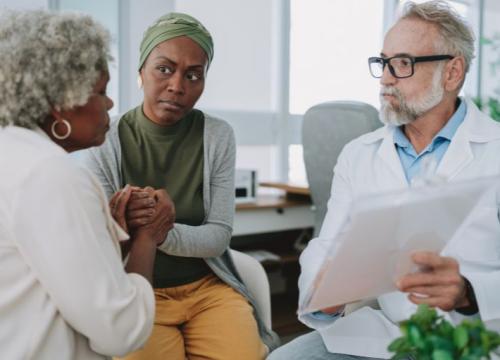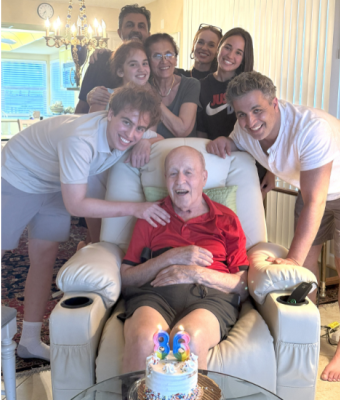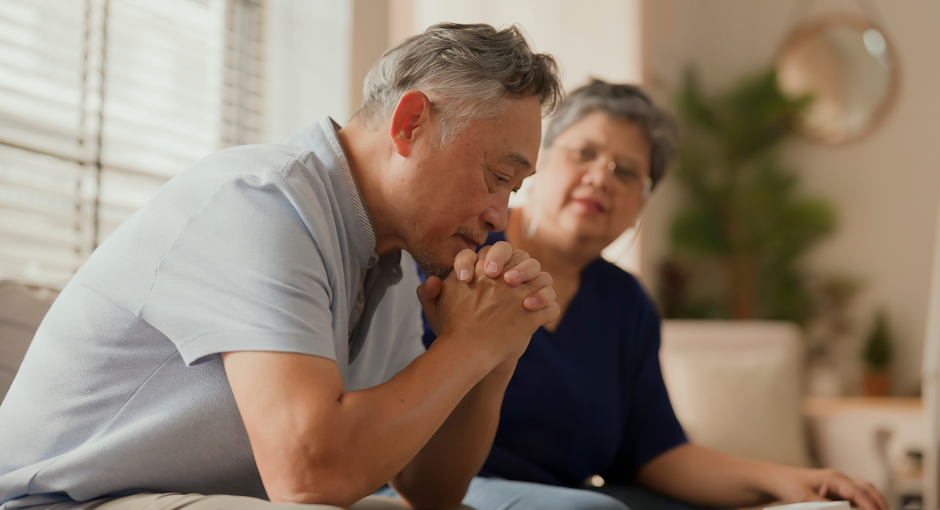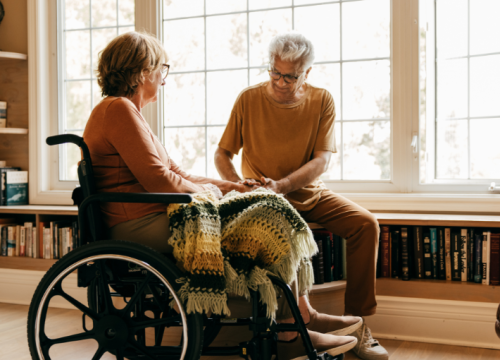Tools to Tackle Thinking and Memory Changes in PD

As we age, our thinking abilities change. Cognitive changes can also occur in Parkinson's disease (PD), including slower thinking, forgetfulness, lack of focus and sometimes, memory loss. In this article, learn practical strategies to lower the risk of thinking changes, improve cognitive health and discover available therapies for cognitive disorders.
The following article is based on a Parkinson’s Foundation Expert Briefing about thinking and memory changes in Parkinson’s, hosted by Dr. Gregory Pontone, MD, MHS, University of Florida Center for Movement Disorders and Neurorestoration, a Parkinson’s Foundation Center of Excellence.
Aging and Cognition
Some thinking processes are well-preserved as we age, including:
-
vocabulary and general knowledge.
-
language skills.
-
remembering how to do things, like ride a bike or cook pasta (procedural memory), the name of the president or your neighbor (semantic memory).
-
the ability to grasp what we see.
Changes in any of these abilities prior to age 70 could be related to Parkinson’s or another aging-associated disease. As someone moves into and beyond their 70s, age and/or Parkinson’s might impact:
-
the ability to hold onto information short-term while focusing on another task (working memory).
-
planning, organizing and accomplishing tasks (executive function).
-
focused and divided attention.
-
how fast the brain understands and responds to information.
Recognizing Cognitive Change in PD
Some degree of thinking changes can affect many people with Parkinson’s. These changes tend to progress gradually alongside movement symptoms. People with young-onset Parkinson’s disease — those who develop symptoms before age 50 — often experience milder, slower cognitive change related to PD.
Mild cognitive impairment (MCI) describes memory or thinking changes that do not impact daily life.
In some people with Parkinson’s, progressive cognitive change can lead to PD dementia (PDD), a more severe decline in thinking. Sometimes a person has insight that their memory is failing, but other times, it is the people closest to them who recognize the signs. Cognitive impairment in PD can affect:
-
Task performance, such as organizing medications or using a remote control.
-
Word-finding and language abilities, impacting the ability to follow directions or participate in conversations.
-
Memory, causing a person to repeat questions, forget important information or have trouble learning new information.
-
Judgement, leading someone to ignore risks or to make bad decisions.
-
Orientation with time and place; a person with impaired thinking may get lost, especially in familiar places.
Memory Difficulty in PD vs. Alzheimer’s Disease
Doctors use the Montreal Cognitive Assessment (MoCA) as a screening tool for thinking changes. It can distinguish between types of memory dysfunction.
Memory impairment related to Parkinson's differs from Alzheimer's disease. A good portion of recognition memory — the skill of recalling things you have come across before — remains largely intact for most people with Parkinson's. Someone with Parkinson’s may have a little difficulty searching for and retrieving a memory but, with a hint or enough time, can remember. A person with Alzheimer's is generally unable to make or retrieve new memories.
Parkinson’s, PD dementia, dementia with Lewy bodies and Alzheimer's disease are associated with abnormally folded proteins that form sticky clumps which damage brain health. Lewy bodies are toxic clusters of alpha-synuclein protein that build up in the brain.
Memory failing early in the course of PD or failing in a way similar to Alzheimer's could indicate a person with Parkinson's might also have Alzheimer's.
Potential Breakthroughs
Gaining a deeper understanding of the complex workings behind PD can improve treatment and care. Researchers are now able to visualize the toxic clumps associated with memory issues through imaging techniques. Scientists are hopeful meaningful advances in technology will soon allow closer examination of misfolded alpha-synuclein protein.
Antibody infusion therapy can remove amyloid from the brain of people with early Alzheimer's disease. The hope is that infusions will slow down disease progression. Future Parkinson’s therapies could inhibit the misfolding of alpha-synuclein proteins to minimize Lewy body formation or possibly even remove abnormal alpha synuclein.
Tools to Improve Cognition Today
As you navigate Parkinson’s stages and symptoms, the pursuit of wellness can have a profound impact.
1. Get moving
The benefits of aerobic exercise in Parkinson’s are powerful. Whether swimming, walking or doing another moderate intensity workout, exercising 150 minutes each week can enhance stability and balance, decrease the risk of falls, reduce depression and directly benefit cognition in PD, improving:
-
attention
-
processing speed
-
reaction time
-
executive function
-
language
Resistance training — using bodyweight, weights or bands — can also benefit cognition, balance, gait and bone density, while reducing the risk of fractures in PD. Resistance training also improves executive function and attention.
2. Practice mindfulness
A 2004 study looked at how 20 people with mild to moderate Parkinson's and 10 people who didn't have PD performed a task as layers of complexity were added.
Researchers discovered that while increasing demands on attention contributed to performance and gait disturbances across all participants, the people who had Parkinson's slowed down even more. Practicing mindfulness, focusing on one thing at a time and blocking out distractions, can help you function optimally with Parkinson’s.
3. Eat a nourishing diet
The MIND diet (Mediterranean-DASH Intervention for Neurodegenerative Delay), a combination of the Mediterranean diet and DASH (Dietary Approaches to Stop Hypertension), is an evidence-based diet for neurological health. Recommendations include eating:
-
at least 3 portions of whole grains daily.
-
a minimum daily serving of one dark, leafy green salad and one serving of vegetables.
-
at least 30 grams of nuts daily.
-
beans or legumes at least every other day.
-
berries at least twice a week.
-
poultry at least twice a week.
-
fish at least once a week.
And limiting:
-
butter or margarine to no more than a tablespoon a day (use olive oil instead).
-
cheese, fried or fast food to no more than once a week.
-
pastries or sweets to less than five times a week.
4. Get good sleep
Quality sleep plays a role in making and recalling memories and may also remove some of the abnormal proteins associated with memory loss. It also helps the body realize the gains of exercise.
Parkinson’s-related brain changes and symptoms can disrupt slumber. Practicing behaviors that get you in the optimal state to relax can help you fall asleep and stay asleep. A healthy sleep routine includes:
-
a regular sleep-wake schedule (try to set aside at least 8 hours).
-
a quiet, dim bedroom.
-
minimal screen time.
Talk to your doctor about sleep issues or concerns. You can work together to find the best tools to address your symptoms.
5. Stay socially connected
Finding and building healthy social relationships benefits the brain and body. Look to community resources for a starting point, including local exercise classes, art activities, support groups or volunteer opportunities. In-home visits, phone calls or online programs can benefit those who have difficulty getting out.
Social isolation and loneliness can be dangerous.
-
Social isolation is associated with a 50% increased risk of dementia, and significantly increases the risk of premature death, rivaling the risks of smoking, obesity and physical inactivity.
-
Research shows isolation increases the risk of heart disease and stroke by about 30%.
Loneliness can increase anxiety, depression, confusion, delusions, memory and communication problems and can impact problem-solving skills. Isolation also increases care partner strain, which can lead to burnout.
6. Explore treatment
Your doctor may recommend you work with a specially trained neuropsychologist or speech-language pathologist who can offer ways to compensate for memory or thinking problems.
Some prescription medications can also improve symptoms of PD dementia. Acetylcholinesterase inhibitors boost acetylcholine (a chemical important for memory and more) in the brain. These include rivastigmine (the only FDA-approved PDD medication), donepezil and galantamine.
Memantine is a medication that protects the brain from excess levels of a chemical called glutamate. It is sometimes used in combination with acetylcholinesterase inhibitors.
Explore More Resources
Related Materials
Related Blog Posts

Parkinson's Medications 101




























